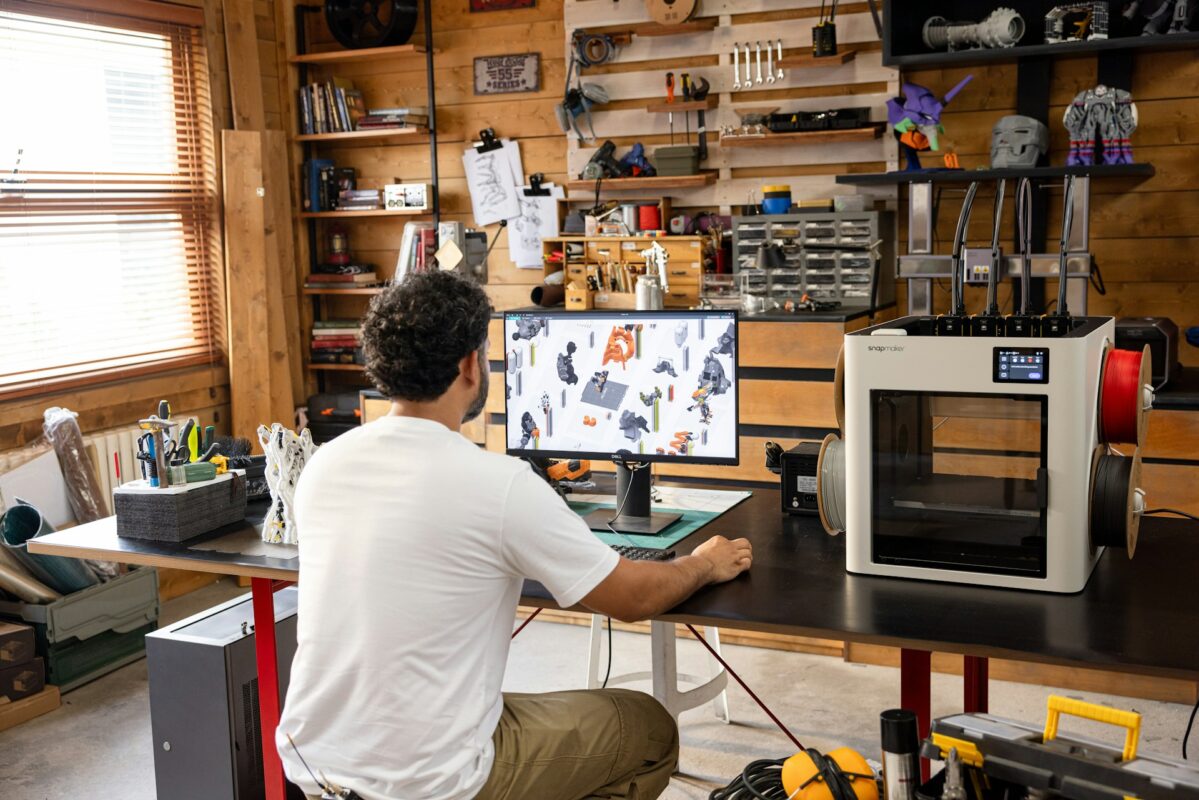In today’s era of precision and speed, 3D modeling has become the backbone of modern manufacturing transforming raw ideas into tangible, high performance products. From aerospace components to consumer electronics, every successful product starts as a digital model that defines its structure, function, and manufacturability. Yet, as industries rush to meet growing demand, the challenge isn’t just about designing innovative products it’s about ensuring those designs can be efficiently and reliably scaled for mass production.
Too often, what looks flawless on screen becomes a costly bottleneck on the factory floor. Small oversights in modeling can lead to production inefficiencies, excessive waste, and rework that delay launches and inflate costs. That’s why optimizing 3D models before they reach the production line is no longer optional it’s a strategic necessity.
This brings us to a critical question at the heart of modern manufacturing innovation:
How can 3D modeling bridge the gap between design creativity and manufacturing efficiency?
In this article, we’ll explore the principles, techniques, and technologies that make 3D modeling not just a design tool, but a powerful engine driving scalable, cost-effective mass production.
Understanding 3D Modeling in Mass Production
3D modeling lies at the heart of industrial design, serving as the digital blueprint that defines every dimension, curve, and connection of a product before it reaches the physical world. In mass production, 3D modeling ensures consistency, precision, and scalability transforming creative concepts into manufacturable realities. Through computer-aided design (CAD) software, engineers can simulate real-world conditions, test performance, and visualize assemblies long before a single part is made.
Popular tools such as SolidWorks, CATIA, Fusion 360, AutoCAD, and Siemens NX dominate the industrial landscape, offering advanced modeling, simulation, and data integration capabilities. These platforms not only facilitate design but also link directly with manufacturing systems, streamlining the transition from digital prototypes to tooling design and eventually mass produced components. By using these tools effectively, companies can shorten development cycles, minimize waste, and achieve faster time-to-market without compromising quality.
Key Challenges in Scaling from Prototype to Mass Production
While 3D modeling offers immense creative freedom, scaling designs from prototype to full production introduces new complexities. Design complexity and manufacturability often clash what’s feasible in a small batch may be inefficient or impossible to mass produce. Engineers must ensure that the geometry, material, and tolerances are optimized for repeatability.
Material limitations and cost implications also play a critical role. Some materials ideal for prototyping, such as certain resins or lightweight composites, may not perform well in large-scale manufacturing. Furthermore, tight tolerances, surface finishes, and assembly fits can lead to costly rework if not managed early in the design phase.
Another challenge lies in data management and version control. As multiple teams iterate on designs, keeping track of the latest model revisions, updates, and feedback becomes crucial to avoid errors and production delays. Effective collaboration and versioning tools are vital to maintaining consistency across global production lines.
Design Optimization Techniques
Optimizing 3D models for mass production begins with Design for Manufacturability (DFM) a philosophy centered on simplifying geometry, reducing part counts, and minimizing manufacturing steps. This approach ensures products are designed with real-world production constraints in mind, improving yield and reducing costs.
Emerging technologies such as parametric and generative design further elevate optimization. These methods use algorithms to automatically refine designs for ideal strength-to-weight ratios, performance, and material efficiency. Similarly, topology optimization leverages simulation data to remove unnecessary material while maintaining structural integrity, creating lightweight yet durable components.
Another strategy, modular design, allows manufacturers to use common components across multiple products reducing tooling costs and streamlining assembly processes. Together, these techniques enable manufacturers to scale efficiently while maintaining innovation and quality.
Integrating Simulation and Testing Early
Before physical prototyping, engineers can predict and resolve design issues using finite element analysis (FEA) and computational fluid dynamics (CFD). These simulation tools test how a model behaves under real-world stresses such as heat, vibration, or pressure helping identify weaknesses long before materials are cut or molded.
By incorporating virtual testing early, teams can drastically reduce errors, iterations, and production downtime. Simulation driven design not only saves cost but also leads to better-performing products by ensuring designs are optimized for actual working conditions.
Collaboration Between Design and Production Teams
Optimization doesn’t happen in isolation it requires close collaboration between designers, engineers, and manufacturers. Using cloud-based 3D platforms, teams can co-develop, review, and approve models in real time, regardless of location. This connected workflow ensures faster decision-making and fewer miscommunications.
Feedback loops between CAD (design) and CAM (manufacturing) systems allow seamless translation from digital models to production processes. By integrating these systems, companies can automate toolpath generation, machine setup, and quality verification turning design intent into precise manufacturing output.
Leveraging Additive and Hybrid Manufacturing
The rise of additive manufacturing (3D printing) has revolutionized how companies approach product development. It enables rapid prototyping and pilot runs, providing valuable data before full-scale production. When combined with traditional methods such as CNC machining known as hybrid manufacturing the result is a workflow that balances flexibility with efficiency.
Digital twins further enhance readiness by creating virtual replicas of physical products and systems. These digital counterparts allow real-time monitoring of production conditions, predictive maintenance, and process optimization bridging the gap between design and factory floor performance.
Ensuring Quality and Consistency
Mass production demands consistency, and this begins with design validation. Setting up validation checkpoints throughout the design process helps ensure that every iteration meets technical and quality standards. 3D scanning and metrology tools provide high precision feedback, verifying that the manufactured part matches the original model.
Moreover, digital quality control systems integrated within modeling software allow for continuous monitoring, documentation, and traceability vital for industries such as aerospace, medical devices, and automotive manufacturing.
Case Studies
In the automotive and aerospace sectors, companies use advanced CAD optimization to streamline production while maintaining stringent safety and performance standards. For example, aerospace manufacturers apply topology optimization and generative design to reduce component weight, leading to fuel efficiency and reduced emissions.
Similarly, consumer electronics brands employ parametric modeling to accelerate product iteration cycles, allowing them to bring lighter, more compact, and cost-effective devices to market faster than ever before.
Future Trends in 3D Modeling for Manufacturing
The next frontier in 3D modeling is being shaped by AI-driven design automation and real-time optimization. Artificial intelligence can analyze manufacturing data, predict potential flaws, and automatically adjust models for better performance.
Integration with IoT and smart factories is also reshaping how digital models interact with production equipment, enabling autonomous monitoring and adaptive manufacturing. Meanwhile, the growing emphasis on sustainability and circular design encourages engineers to create models optimized for recyclability, energy efficiency, and minimal material waste.
Conclusion
Optimizing 3D modeling for mass production is more than a technical process it’s the art of aligning creativity with manufacturability. By applying advanced modeling techniques, simulation-driven testing, and collaborative workflows, businesses can bring products from concept to mass production with greater speed, precision, and cost efficiency.
As the manufacturing landscape shifts toward automation, sustainability, and smart production systems, the ability to optimize 3D models will determine who leads and who follows. Companies that integrate digital design with real-world manufacturing insight gain a lasting competitive edge.
Ready to elevate your 3D modeling and production capabilities?
Partner with Innovengg, your trusted engineering solutions provider. Our team specializes in design optimization, manufacturability assessment, and production readiness helping you turn innovative ideas into scalable, high-performance products.
Contact Innovengg today to explore how we can help you optimize your 3D modeling process for mass production success.

